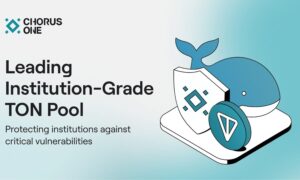Personalization, providing contextual information, and full visibility are the main characteristics of our managed detection and response services. It can also be described as super-relevance. Relevance means executors know what they are protecting for you and what they are protecting you from. Relevance also means your cyber security performer is aware of what known and emerging threats may be targeting your company. And relevance means that they respond as quickly and efficiently as possible – with you and on your behalf.
What is MDR?
MDR is an ideal solution for companies that want to outsource all or part of their security needs to a dedicated team. Organizations can benefit from the skills and knowledge of these experienced security experts and can even plan responses to pre-defined attack scenarios. The most important difference from an EDR solution is that security experts continuously monitor events, allowing for faster response and more aggressive threat investigation.
Nowadays, threats are more complicated to trace and so advanced that they make it harder to prevent any security breaches. That is why there is a tendency that businesses are turning to managed detection and response (MDR) services to protect their IT systems. According to a recent survey, 94% of companies that do not already use MDR are currently weighing up this option and evaluating or starting a plan to assess MDR within the next 18 months.
MDR popularity
The MDR market has been identified as one of the largest and fastest-growing segments of the cybersecurity market, with a turnover of over $100 billion. The International Data Corporation (IDC) has recently defined MDR as “the next generation of managed security services” due to the growing business need for a highly skilled security service that provides 24/7 monitoring, analysis, and rapid response to all types of attacks. “Organizations are currently struggling to balance the use and cost of a multitude of different security tools while facing a shortage of SOC staff, resulting in lengthy investigations and a lack of transparency needed to identify and remediate today’s threats,” said Christina Richmond, Program Vice President, IDC.
Types of MDR services
Managed Detection and Response (MDR) is proactive threat detection, continuous security monitoring, and immediate incident response across any system: websites, network devices, servers, workstations, and individual applications.
When speaking about MDR services, it is worth mentioning these types:
- Cyber threat hunting is a manual and semi-automated proactive search for cyber security threats across networks and endpoints to detect malicious, suspicious, or risky activities that were not detected by automatic tools. The tactics of the preventive search for cyber threats are used with the aim of using new information about threats based on previously collected data to identify and classify potential hazards, including APT (advanced persistent threat, “developed persistent threat,” targeted attacks, continuous covert incidents).
- Continuous security monitoring and alert triage. Experts analyze security-related network data to find hidden threats that cannot be detected by traditional security measures. We use event logs, alerts, NetFlow, full packet capture, NIDS, SIEM, EDR, IDS, zero-day attack detection, and many other methods, tools, and resources.
- Cyber incident response and forensic analysis. It is a digital device incident investigation and recovery method to detect and analyze any criminal or hacking activity. Cyber security experts have extensive experience and knowledge in the incident response field and use this knowledge in conjunction with modern cyber forensics tools to comprehensively analyze incident data, regardless of the type and size of the incident.
What are the risks and solutions?
In terms of MDR, it is worth stating the importance of dwell time. Additionally, Dwell Time is the number of time that hackers spend in the infrastructure. Threat performers often spend a lot of time moving sideways before taking action when a business is the victim of a breach. An MDR solution, in particular, can be advantageous in detecting such events, mainly when used in conjunction with endpoint protection.
Finally, human risk analysis, threat hunting, and overall security resilience tactics are often combined with MDR solutions, allowing organizations to protect endpoints and the entire infrastructure.
The real question is not MDR vs. EDR. Companies should only ask which of the two, or perhaps both suits them. Its capabilities are undeniable in a fully digital world and should be present both in the company’s vocabulary and in its security strategy.
A hack, a DDoS attack, a successful phishing campaign, or simply an employee’s negligence is no longer a yes question. They are certainly waiting to happen, and EDR and MDR are weapons in the coming fight, whether companies want it or not.
A company that does not have an EDR for its security team will never know how an attack happened, where it started, how it spread, and most importantly, what the extent of the threat was. When a company implements EDR into its infrastructure, all of these details are available for further investigation of the incident, even if the attackers were successful. The value of this tool cannot be underestimated, as it can help an organization understand which tactics and techniques it is vulnerable to and then take appropriate action to close those blind spots. In the meantime, MDR is an ongoing tool to not only track those threats but also to foresee them and prevent them from happening.
Wrapping up
Suppose you are looking for some ways to optimize the cyber security of your company. In that case, our recommendation goes as follows: consider implementing MDR into your business and have a good sleep every single night. To summarize all the benefits, let us outline them in particular points:
- When opting for MDR services, you get 24/7/365 monitoring and security without any staff complexities
- Your employees will never feel that kind of alert fatigue in case of emergency
- No more need for repetitive tasks
- Human and machine intelligence will be leveraged entirely, and it is all thanks to efficient threat detection and response opportunities.
- If you have an in-house IT department, their workload will be optimized, and it will leave them with more time available for more relevant business matters.
- Your security will constantly be updated and strengthened by a team of professionals.

































